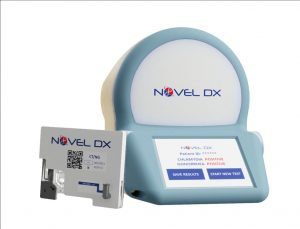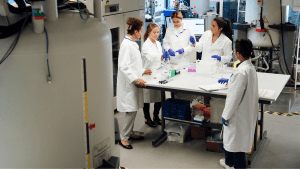
Image Credit: CBRE U.S. Real Estate Market Outlook 2024
CBRE Report Highlights Growth in Maryland During Q1 2024
The Maryland life sciences market continues to perform reliably, with 138,000 square feet of leasing activity to start the year.
By Alex Keown | April 25, 2024
| BioBuzz has been connecting the life science workforce since 2009. We’ve built an expansive community in the Mid-Atlantic with a national readership that spans from Massachusettes to Florida, and New York to California. For our next chapter, we’re building a proprietary talent logistics model to help employers source and hire life science talent. Learn more. |
Maryland’s life sciences real estate ecosystem outperforms and is poised for continued growth as a result of an improving funding environment, according to a quarterly report issued by CBRE.
In its Maryland Life Sciences Q1 2024 Report, CBRE, the world’s largest commercial real estate services and investment firm, noted some of the key highlights seen across Maryland’s life sciences ecosystem during the first three months of the year.
Funding Improvements
Dan Grimes, CBRE Senior Vice President, said there is improved overall industry sentiment that will benefit the Maryland ecosystem.
“The life science sector experienced a much-improved funding environment in the first quarter, propelled by increased M&A activity, pent-up venture capital demand and a warming public equities market,” Grimes said.
The first quarter closed out with positive financial news. In March, Clasp Therapeutics, an immuno-oncology company developing next-generation T cell engagers (TCEs), launched with $150 million in financing. Clasp’s TCEs are bispecific antibody-like molecules designed to simultaneously bind both a T cell and a tumor-specific mutant peptide. The company’s platform allows it to select patients based on common tumor-specific driver mutations, the Rockville-based company noted in its announcement. It’s believed the TCEs will benefit cancer patients who are not currently responding to existing therapeutic approaches.
Clasp Therapeutics, a spinout from Johns Hopkins University, has a list of well-known financial backers, including Catalio Capital Management, Third Rock Ventures, Novo Holdings, Vivo Capital, Cure Ventures, Blackbird BioVentures, Pictet Alternative Advisors, American Cancer Society’s Bright Edge and Alexandria Venture Investments.
Grimes said the financing Clasp received is an example of the improved funding environment and potential for real estate growth across Maryland’s life sciences ecosystem. It’s also a good example of the tech transfer and company formation coming from research at Johns Hopkins University, he added.
“As these funding events lead to real estate implications, the Maryland real estate market is poised to outperform, having benefited from a measured supply pipeline juxtaposed to the influx of spec construction plaguing many of the other top National life sciences clusters,” Grimes said.
Life Sciences Real Estate Growth
Maryland’s life sciences ecosystem includes approximately 17 million square feet of developed space. Data shows a 6.1% vacancy rate and 10.5% availability rate, which includes subleases and projects under construction. Grimes noted that the supply of available space in Maryland “remains tight.”
Grimes says the state’s real estate market is well-positioned due to “consistent, reliable demand,” as proven by the 138,000 square feet of leasing activity this year, of which 67% represented new net demand.
Growth was seen all along the I-270 Corridor, including 34,000 square feet of leasing in Shady Grove, a total of 64,000 square feet across three transactions in Frederick County and 25,000 square feet at the former Arcellx space in Gaithersburg. Several of the deals were backfills, where companies took over newly-available sublease space, according to the report. One such project was Cartesian Therapeutics’ backfill of the former Forcyte Bio space in Frederick. While it was the only manufacturing deal of the quarter, CBRE predicts “active tenant requirements” indicate an accelerated demand for biomanufacturing space in Maryland.
In total, five Q1 2024 deals ranged between 15,000 and 50,000 square feet, surpassing the entire mid-sized deal volume of 2023 and matching that of 2022, CBRE reported.
“On the surface, Maryland lab demand remained consistent in the first quarter. However, there was a noticeable shift in the type of activity, with the reemergence of mid-sized companies – a dormant segment of the user community in 2023” Grimes said. “We expect biomanufacturing requirements and growth from recent funding events to drive activity for the remainder of the year.”







